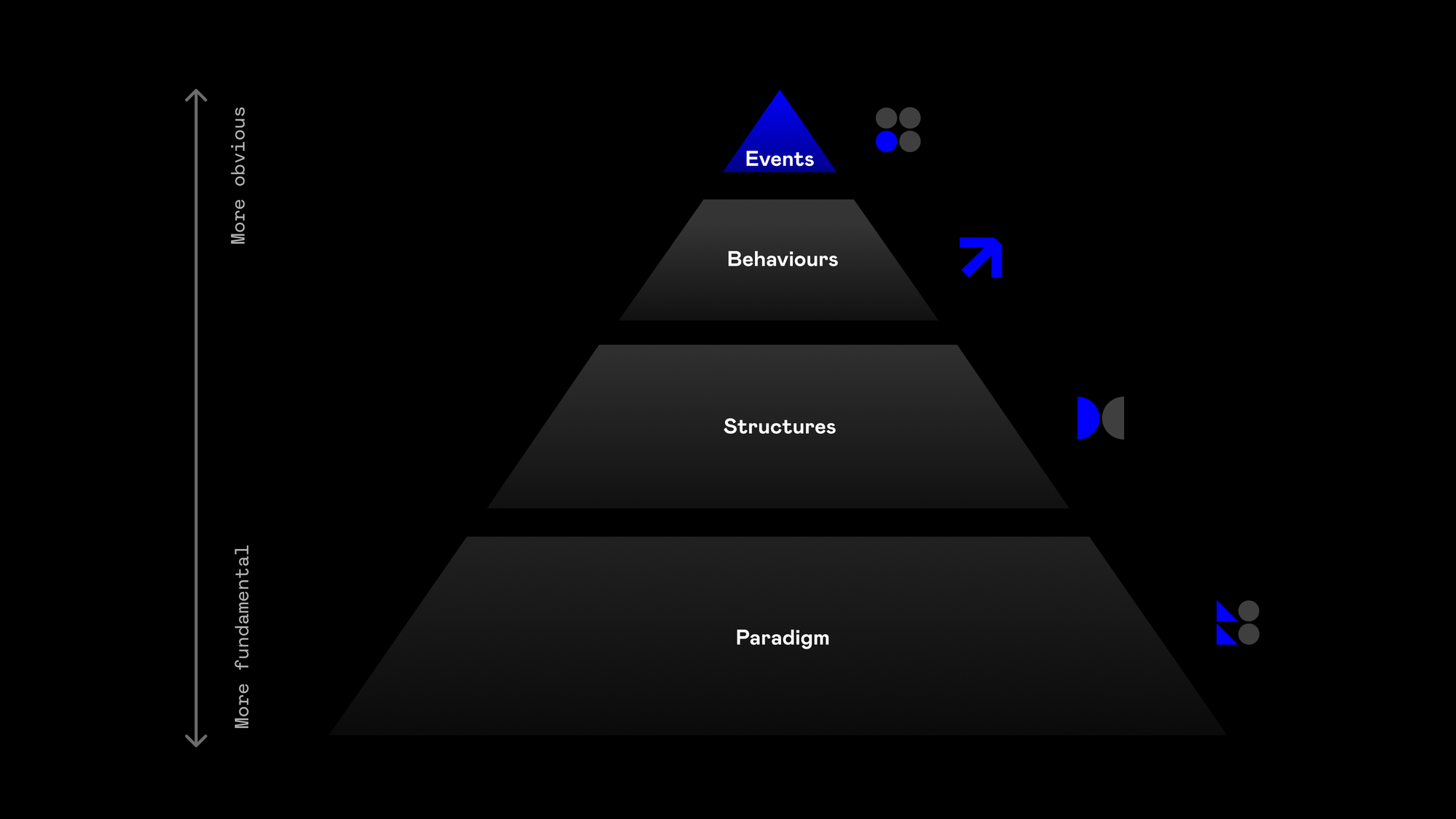
In a world where information is a commodity, deep understanding is the most valuable resource.
Roger Penrose argues that understanding is what separates us from computers:
Intelligence cannot be present without understanding. No computer has any awareness of what it does.
Sometimes people view understanding as binary: UNDERSTAND <> DO NOT UNDERSTAND.
Yet, understanding is not a not like that. It is a spectrum. It ranges from shallow comprehension to profound insight.
The framework represents exactly this spectrum.
The Four Levels
1. Events
Observable things in our immediate environment.
They are singular incidents or phenomena that capture our attention:
- news headline
- sudden market fluctuation
- personal experience
Little understanding is required here. Merely observing. We can recognize the significance of something, yet we are unable to explain it.
2. Behaviors
Moving a layer deeper. Rather than isolated incidents, behaviors are sequences of events that reveal some regularities.
We usually view them as patterns and trends that emerge over time.
Understanding at this level → recognizing these patterns. And possibly using the patterns to try to anticipate future events.
3. Structures
At this level we focus on systems and processes that produce observed behaviors.
Structures include:
- organizational setups
- market mechanisms
- societal norms
- economic policies
- supply chain networks
- urban planning
and many others.
Understanding structures allows us to:
- see the cause-and-effect relationships
- recognize interconnections & interdependencies
- studying feedback loops
- make sense of emergent properties
- facilitate system optimization
4. Paradigms
These are the core frameworks upon which structures are built and behaviors emerge.
They encompass the most fundamental principles that govern the entire systems:
- essential human beliefs & values.
- core doctrines that permeate every aspect of society
- foundational principles & ideologies
Just as tectonic plates shape the physical landscape, paradigms mold the social, technological, political, and economic landscapes.
Shifting paradigms can lead to transformative changes.
From Obvious to Deep

The framework represents a path from superficial observation to profound insight.
You can link each level to the question:
Events: What happened?
Behaviors: What patterns are emerging?
Structures: What is underneath these patterns?
Paradigms: What core principles & beliefs shape these systems?
Wrapping up
The framework outlines the structure of a continual process of inquiry and reflection. It challenges us to look beyond the obvious, to question our assumptions, and to seek nuanced deep understanding.